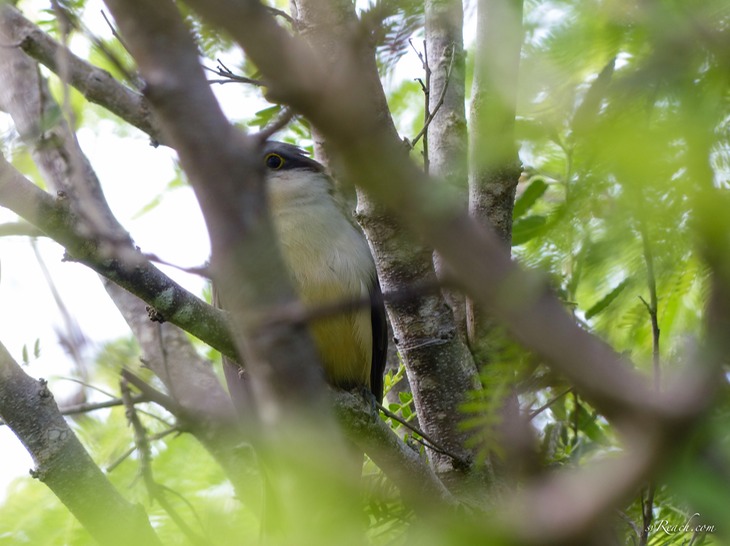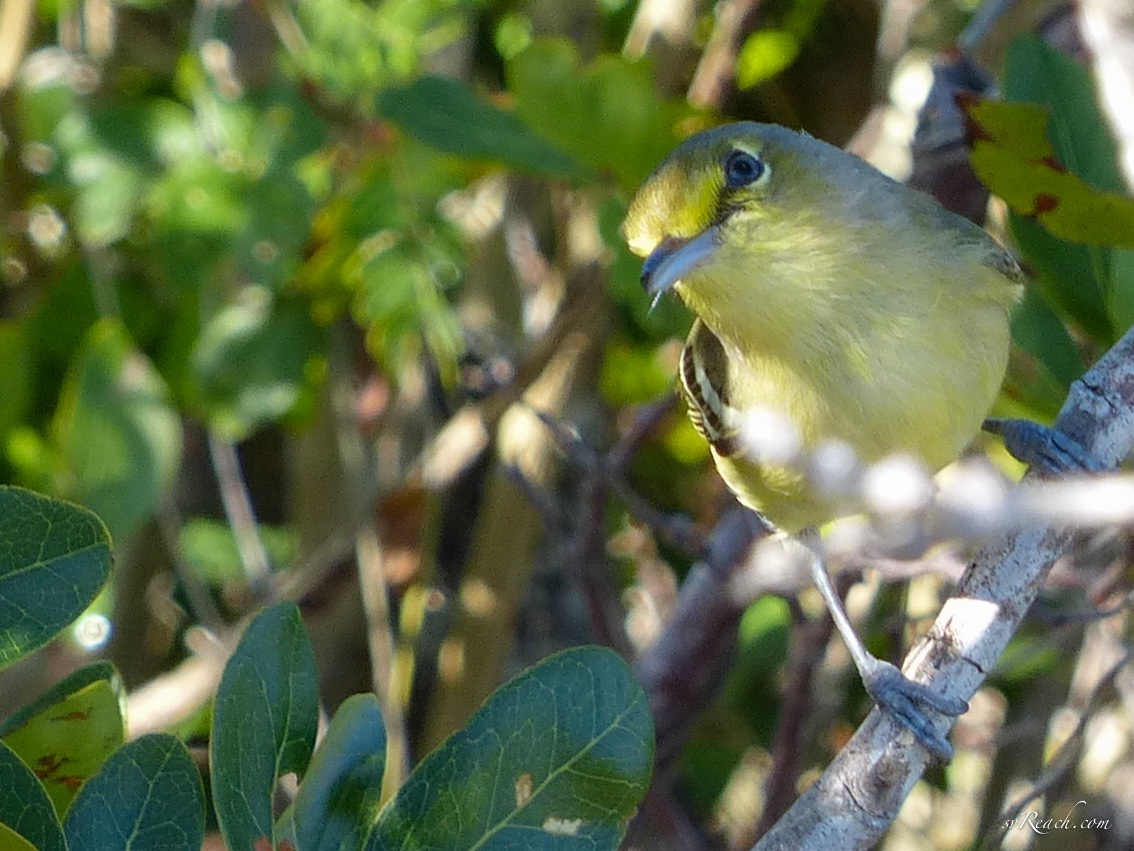My recent birding days have finally paid off with two mangrove cuckoo sightings! The first one was hanging around for 10 minutes or more with lots of posing… but NO camera - ugh.
Finally, yesterday I came across another, shy mangrove cuckoo. The rains have made the brush very green and thick, making it much more challenging to find and photograph subjects.




Those rains have been bringing out the birds, and on my first walk, many were coming right close. The mockingbirds are alway first to greet me, singing an energetic song, stringing together melodies not of their own. “Birdie-birdie-birdie”… nope, that is not a cardinal over there!
There are two types of mockingbirds found here, the northern mockingbird with a gray eye stripe and white breast, and the Bahama mockingbird.
Bahama mockingbirds are bigger than their counterparts, with brownish head, breast spots and a throat stripe. Simply gorgeous.
Another local that was very active on this day was the greater Antillean bullfinch.
Several were buzzing their raspy call all around me, busy eating berries.
I could hear a vireo with its distinctive rapid-fire call, and just then he landed on a branch right next to me. I got several blurry photos because it landed inside of my superzoom camera's focal length - damn… until I got lucky and snapped one clear photo to remember him by. This cutie is a white-eyed vireo, a bit rarer than the more common thick-billed vireos around here.

Anchored in Salt Pond, Long Island, there are two large salt ponds in the middle of the island to explore. These will fill up with migrating shore birds very soon, but for now I found a couple of interesting birds here in February.
Least sandpipers are very tiny birds that are the smallest of their kind. Three of them were reasonably brave and hung around for a while as I took some photos.

Killdeer usually don’t let me get very close, but as I was focusing on other birds this one crept up next to me. What brilliant eyes!
Three lesser yellowlegs were feeding on a calm day. They bob their heads in and out of the water every few steps, feeding on little fish and crustaceans.
On another walk to the same ponds, I was fascinated by the only shorebird I saw that day.
It stayed quite a way away from me and kept flushing early.
It was quite large, and definitely had the head of a plover.
I’ve seen enough plovers to know that big, flat forehead and short, stout beak.
I had no idea what kind of plover it was, so I used my Merlin Bird app to upload the photo… and like magic it was identified as a black-bellied plover. These birds have an striking, black underside when breeding. I was even more excited to learn that they are Arctic residents!!! The Bahamas are at the southern end of their range.
Warblers also migrate through here. The palm warbler with its chestnut head and white eyebrow is ubiquitous and tail-bobs all over the rocks, eating up the small flies that are in bloom on the edges of the salt pond.
I’ve also seen yellow-rumped warblers (so-called for obvious reasons)…
Prairie warblers (with their “specs”)…
and Cape May warblers (chestnut cheeks & white undertail)...
I love finding warblers... sometimes hard to spot since they are so small, much less to identify because the differences are often minute, but I’m getting fairly good at ID. All of these are winter migrants. I need to get somewhere and figure out how to catch a major migration pattern someday. It’s not terribly hard with modern forecasting, but not necessarily easy either.
I had heard there were ani’s here, which I just realized are in the cuckoo family. I hadn’t see them here yet, although they were abundant in Panamá. So at least I was prepared when I spotted a smooth-billed ani who appeared to be a sentinel for the rest of the group. Fortunately, this ani decided I wasn’t a threat so I could approach their small group.
Right up there with the mangrove cuckoo was an American kestrel sighting!! Approaching the brush one day, my first view out of the corner of my eye was of a bird hovering to my right. It stayed there for what seemed like a long period of time and then perched. I was thrilled to see this species again, after my first sighting in Panamá, the smallest bird of prey in the America’s.
All bird sightings were recorded to eBird ~ which I just started contributing to a few years ago. An easy web-interface & app run by the Cornell Lab of Ornithology that contains a wonderful source of local knowledge and a great crowd sourcing site to capture data on birds around the world.